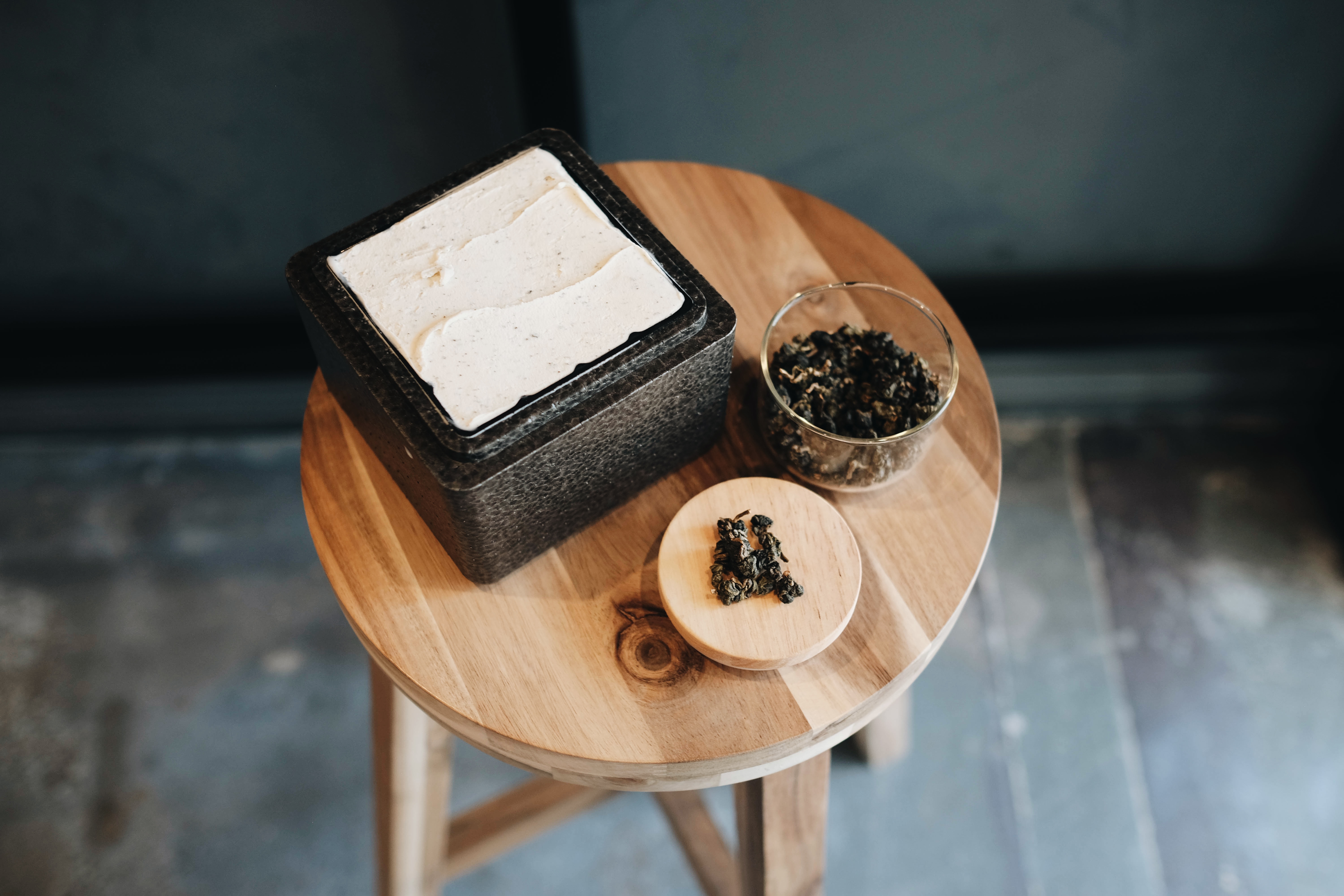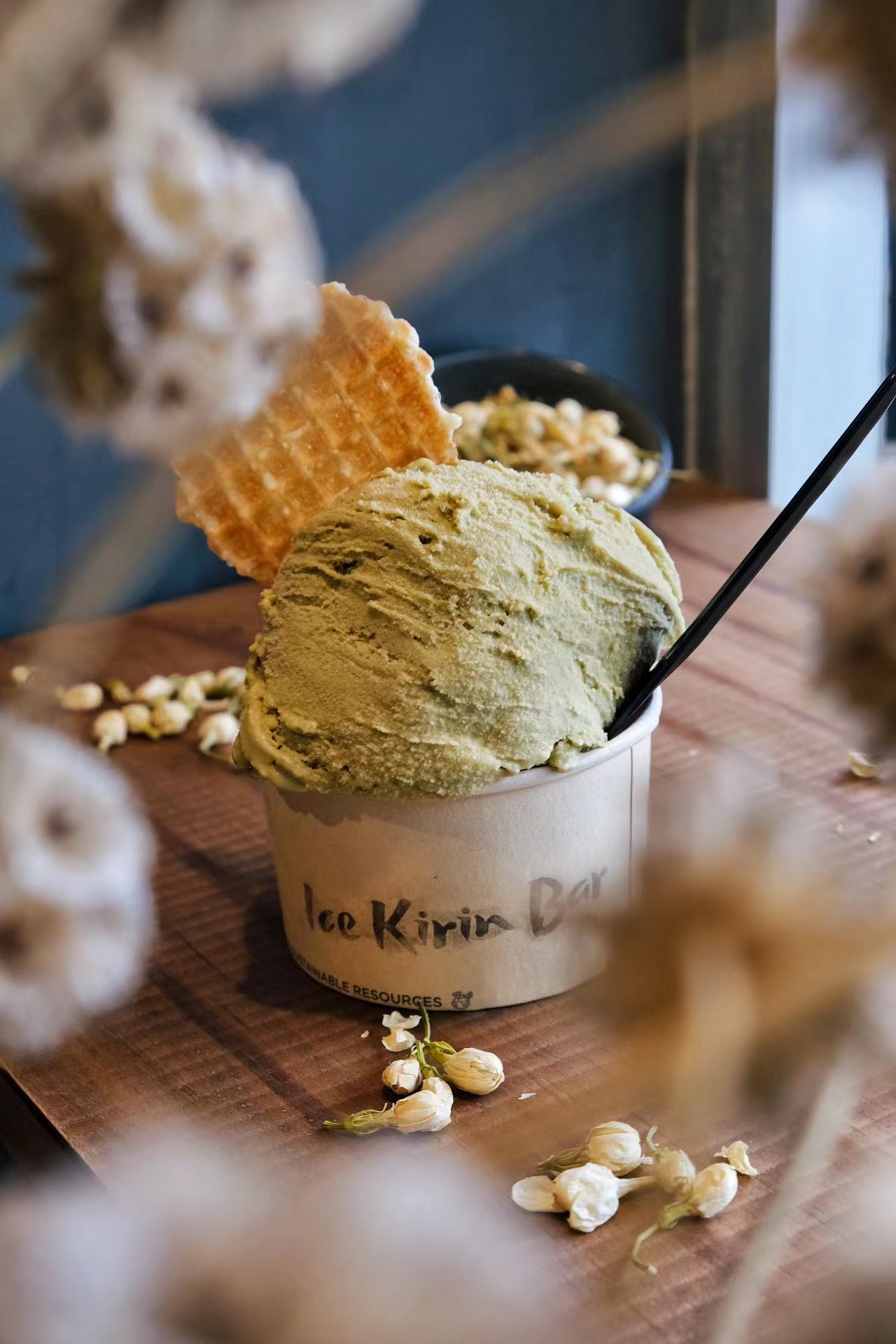Asian flavors have sneaked into multiple food categories. Per consulting agency Euromonitora, sales of Asian food have grown 135% in the past two decades. Riding on the trend, ice cream and other frozen food have also become a natural testing ground for Asian flavors. For example, Dylan Thompson, Senior Marketing & Consumer Insight Manager of Symrise, a major producer of flavors and fragrances, noticed that Asian herbal ingredients such us curcumalonga and calamus have found their way into the ice cream sandwich, a typical American food. Its Italian peer Gelato has also creatively infused Asian flavors into its authenticity; among the innovations, tea flavor is emerging in the segment. We are honored to invite Nico, the owner of “Go! Cha Cha”, a Guangzhou-based tea-flavored Gelato shop, and Jhon, the owner of “Ice Kirin Bar”, a Sydney-based shop dedicated to Asian and tea-flavored ice cream, to share their opinions on the tea-flavored delicacy.

Why Is Tea Flavor Compatible With Gelato’s Asian Style?
Stemming from the Latin word geltus (meaning frozen), Gelato is how Italians call their ice cream. It is a natural combination of milk, cream, sugars, fruit and smashed nuts. The success recipe lies in high-quality ingredients and balanced proportions, but there is no fixed formula to make great Gelato. Such a natural production makes it possible to imbue diverse flavors.
For the food industry, it is no new story to mix different flavors into one product to ensure that customers can get a multi-layer taste experience from just one purchase. The rising presence of Asian food also reflects a broader trend: young consumers have shown more interest in unique food with diverse international flavors. An evident example is food truck culture in South California, which derives from the region’s diverse population. The trucks gave birth to the special bulgogi taco, a blend of classic Mexican dishes with sweet and spicy Korean beef topped with the Korean red pepper sauce Gochujang!
Now, let’s go back to the marriage of Gelato and tea. Gelato is never short of enthusiasts in the ice cream realm, while tea is also pushing forward its market boundary. According to the Food and Agriculture Organization of the UN, the growing demand in emerging countries will further push the production and consumption of tea in the next decade. In China alone, the tea consumption structure has been found to be getting more diverse, according to the country’s National Bureau of Statistics, as the proportions of red tea, white tea and yellow tea surge. In recent years, domestic and international products with tea flavors have increased public acceptance. According to a report of Global New Products Database, in the Chinese market, the share of tea-flavored food and beverage increased from 1.4% in 2019 to 2.2% in 2021, up 52.9%.
When Italian Gelato, an emblem of natural principle, meets tea, a synonym of health, the dual international flavors crash to present a cold savor of the usually hot dr ink. Thi s r i ght ly echoes wi th “Ampl i f ied Experiences”, one of the 2022 Top 10 Food and Beverage Trends put forward by Innova Market Insights, an industry data supplier.
Since the pandemic has driven customers to a healthier lifestyle, it is welcome that tea has crowned ice cream with a healthy halo. Symrise once said that customers have been more discreet with products good for health, which triggers tea to show up in multiple foods, rather than simply being a drink.
Can tea go well with ice cream? Actually, tea has been added into food since long ago; it is a tradition in China to “eat tea”. For example, as Master Lu Yu (733-804) recorded in his Book of Tea , in the past, tea was cooked with spring onions, gingers, dates, orange peels, dogwood and mint in porridge. The flavors of the tea leaf itself could enrich the aroma of the food. Both tea and ice cream have extensive possibilities, and maybe the market can tell us if the infusion is possible.
From Menu to Market
In recent years, tea drink stores, cafes and tea leaf businesses have jumped into the ice cream market, and the realm has been important for the tea drink, the coffee and even the traditional catering industry.
“Ice cream is a popular dessert for both young and old. It’s a good fit for those big names to do advertising and get into the new market. For example, the prestige alcohol brand Moutai made ice cream to cultivate or look for a new customer base. All in all, both the industry and consumers are happy to see more resources dumped into the ice cream realm,” says John.

When consumers discover tea-flavored ice cream in such a trusted environment, this high-quality product experience will spark their interest in the delicacy. They may pay more attention to related products and gradually develop a consumption habit.
However, most of such tea-flavored ice creams are only available in summer, though a few brands do sell pre-packaged products in their stores. “If Gelato’s character and flavor are not displayed in an offline scenario, it would not be possible to create a natural, fresh experience. An offline scenario is very important to trigger more consumer interest,” says Nico. As for the absence of big brands dedicated to tea-flavored ice cream, he believes it is because “ice cream is still taken as a seasonal product”. “Many coffee and tea brands add tea-flavored ice cream to enrich their seasonal menu. They do not invest in a separate product line.”
The growing tea-flavored ice cream realm also nurtured the tea market.
Just like many tea and coffee brands taking tea-flavored ice cream as a side line, Ice Kirin Bar also has tea as one of its side lines. John tells us that it is a part of the branding, an intention to tell customers that they use good ingredients while offering a place to buy tea for those who get interested. “After trying our tea-flavored ice cream, many customers bought related tea leaves or tea powders. After all, ice cream is more attractive to the young generation than tea. Once they have tried the ice cream and found themselves fond of the flavor, they may get curious in learning and exploring more about tea, and naturally fall in love with tea.”
Find Balance Between Gelato and Tea
Different teas are baked in different states, each with a special technique. John tells us his three common ways to make tea-flavored ice cream: using grinded tea powder or concentrated sauce made from strong tea, or even cooking the tea directly in ice cream syrup.
“Each of these methods has its own characteristics. The result may be completely different even if the same tea leaves are used,” he added.
Gelato is very sensitive to the balance of liquid, solid and gas, and the variation of tea absorption remains a challenge. Nico said the most difficult part of the process is to find the best balance of tea and Gelato, because the original tea flavor may be lost after the tea is mixed with milk, leading to an unsatisfyingly light tea flavor. The time of tea extraction and the seasonal flavor changes may affect the final taste and color of Gelato. Therefore, it is important to adjust the amount of tea and the degree of tea extraction according to tea changes in different seasons, so as to ensure a stable taste and texture of Gelato.
In addition, although there is a great variety of tea, not every tea has a prominent flavor. That’s why not every product from Ice Kirin Bar and Go! Cha Cha is purely tea flavor; the two stores sometimes make “overlays”. For example, Go! Cha Cha launched a pineapple Da Hong Pao flavor. “The oolong tea Da Hong Pao has a mellow flavor, and its fragrance can’t be noticed with a first bite. It can go very well with fruit. Our customers comment that the final product starts with the pineapple flavor and ends with Da Hong Pao, nicely balancing the taste layers of multiple ingredients,” Nico said.
Special for its creative flavors, Gelato is never bothered with the question of how to keep up innovation while only focusing on tea. Ice Kirin Bar recently unveiled its Daifuku ice cream. The Japanese Daifuku dessert can be traced back to the Muromachi Era, more than 400 years ago. Though it is more like a “nice-tohave” option for customers rather than an innovative attempt, “it sold quite well beyond expectations, and brought in a lot of new customers.”
Nico mentioned, “We firmly believe that innovation comes from the integration of local features, flavors and seasonal characteristics. We will dive deep into the innovative presence of localized taste. This is the next direction.” As for consumers, Nico noticed that young customers are highly receptive to the taste of tea. It’s easy to bring a new concept to them, but more difficult to get good feedback.
To some extent, this has made consumers sensitive to the price. “The high price comes with the imported raw materials and machines; our ice cream is 100% made of milk. We can lower the price if domestic factories can carry out the Research and Development of the machines and raw materials,” Nico said.

Among thousands of tea varieties, Japanese matcha flavor has been taken as a classic intoxicant to tea-flavor lovers. Is it possible to offer more tea flavors? It should only be a matter of time.









NO COMMENT